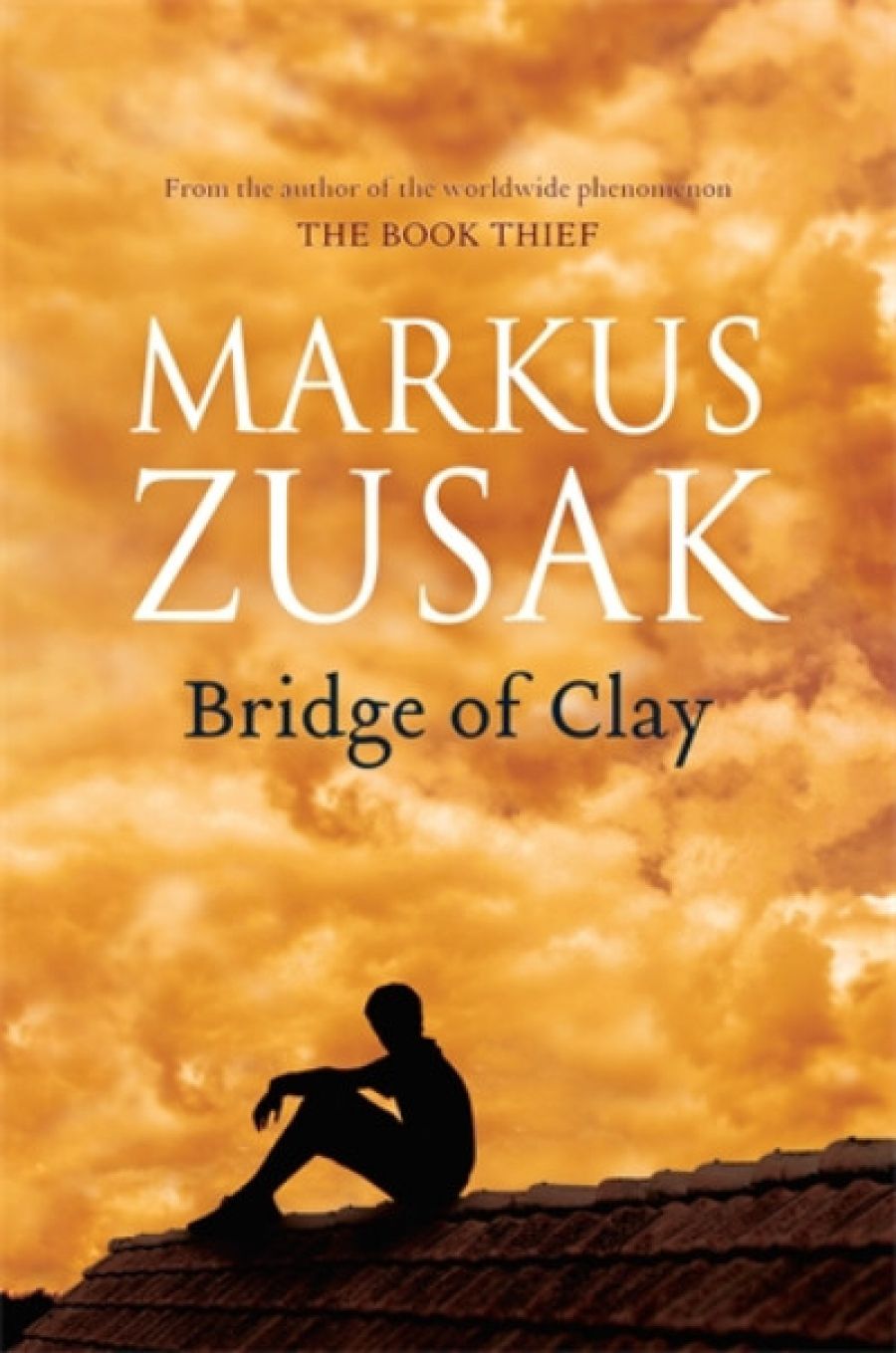
- Free Article: No
- Contents Category: Fiction
- Custom Article Title: Nicole Abadee reviews 'Bridge of Clay' by Markus Zusak
- Review Article: Yes
- Online Only: No
- Custom Highlight Text:
Most writers seek to better their previous books, but in Markus Zusak’s case this goal was particularly difficult, given that his last book was The Book Thief. Published in 2005, it has sold sixteen million copies worldwide and spent ten years on the New York Times bestseller list ...
- Book 1 Title: Bridge of Clay
- Book 1 Biblio: Picador, $39.99 hb, 579 pp, 9781743534816
So, does it deliver? Yes, in spades. Zusak has crafted a strapping story (almost 600 pages) about love, family, courage, betrayal, and guilt. There is every chance that the family at its core – Michael and Penny Dunbar and their five sons, Matthew, Rory, Henry, Clay, and Tommy – will come to inhabit as familiar a place in Australian literature as the Lamb and Pickles families from Tim Winton’s Cloudstreet (1991). The world that Zusak creates in Bridge of Clay is every bit as fully realised, the characters as memorable, the prose as accomplished.
Bridge of Clay centres on the fourth Dunbar boy, Clay – ‘the best of us’ – and his efforts to expiate the (perceived) sins of his past. Set in Australia in the 1980s (look out for excellent cultural references), it is narrated by Matthew eleven years after the main events have taken place. The story unfolds gradually through chapters which alternate between the past and the present. It opens with a man, ‘the Murderer’, breaking into the home of the Dunbar boys. They are a rambunctious bunch, aged thirteen to twenty, who have lost both parents – ‘Our mother was dead. Our father had fled.’ It turns out that the man is their father, Michael, who walked out on them two years earlier after their mother died. Michael, whom the boys despise (hence ‘the Murderer’), has returned to see if any of the boys will help him build a bridge over the river near where he lives. They refuse. Clay, however, changes his mind.
Bridge of Clay is largely a book about love: romantic, family, and fraternal. The love story of Michael and Penny lies at its core. They are not an obvious match – she a refugee from Eastern Europe, schooled in the Greek classics and the piano, he a shy Australian man nursing a broken heart – but they fall in love, marry, and have five sons. Their life is brutally disrupted when Penny is diagnosed with cancer. Although there are moments of humour (much of it black), Zusak’s descriptions of Penny’s slow decline as witnessed by her husband and young sons are almost unbearably sad. The other love story is that of the teenage Clay and Carey. Zusak’s depiction of their romance is as tender as it is respectful. ‘In Carey Novac, Clay had found someone who knew him, who was him.’
Zusak writes powerfully of family love. The Dunbars’ family life is shambolic but joyful, and Zusak’s depiction of it ranges from the hilarious – such as when the whole family, Penny included, sit down to dinner with their shirts off – to the heartbreakingly poignant, when the boys gather around Penny’s sickbed while their father reads her beloved Homer to them all. Finally, there is brotherly love, in abundance.
 Markus Zusak
Markus Zusak
Bridge of Clay is also a book about betrayal, guilt, and redemption. Penny betrays her father when she flees Europe; later, her body betrays her. Michael betrays his sons when he abandons them after her death. Clay betrays his brothers when he leaves them to help Michael build the bridge. Each must deal with the guilt and try to atone for their sins.
For Michael and Clay, the path to redemption is the building of the bridge. They model theirs on the famous Pont du Gard aqueduct in France, and they share a passion for Michelangelo, especially his sculptures of David and The Slaves. The former is perfect, while the latter is unfinished, depicting the bodies of the slaves in an eternal struggle to emerge from the marble – a metaphor for Michael and Clay’s efforts to make their own bridge perfect. Ultimately, Clay acknowledges the futility of that quest – ‘I’d die to find greatness like the David some day … But I know … we live the lives of the Slaves.’ It might not be perfect, but the bridge is beautiful, and it seems to even become an extension of Clay himself – the ‘bridge of clay’ of the title.
Zusak has a delightful turn of phrase. When Clay is with Carey, a jockey, ‘His heart was out of its gate.’ The novel is replete with imagery and allusion: it opens with a biblical reference (‘In the beginning there was …’) followed closely by a description of Michael’s ‘crown of thorny hair’. Water is a leitmotif; when Clay leaves to join his father, he is surrounded by (metaphorical) floodwater, and he dives in ‘to a bridge, through a past, to a father’. There are multiple classical allusions, reflecting Penny’s deep love for The Iliad and The Odyssey, as well as modern ones – Michael is a ‘wasteland in a suit’ after Penny’s death.
Zusak has said that Clay’s experience building the bridge reflects his own of writing the novel – ‘Clay wants to achieve something great, but he knows he is only human. His only greatness is knowing he can’t ever achieve it fully – but trying to make it there anyway.’ The analogy is not germane. Zusak has created a great novel, rich with meaning, and one that will endure.


Comments powered by CComment